-
1.Rothamsted Research (The longest running agricultural research station in the world)

- Rothamsted is the longest running agricultural research station in the world. It was founded in 1843 and some of the field experiments that began then are still running today.
-
2.DNA (The recipe for life)

- The human body uses DNA (DeoxyriboNucleic Acid) as a manual for development and functioning. DNA is a form of information storage. In humans it consists of over three billion 'bases'.
-
3.Vaccinations (The development of vaccines)

- Vaccination is one of modern medicine's greatest breakthroughs.
-
4.Down House (Home of Charles Darwin)
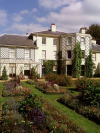
- Charles Darwin lived at Down House for forty years from 1842 until his death in 1882 and carried out many of his experiments in the gardens and greenhouses.
-
5.John Innes Centre (A leading scientific research centre)

- The John Innes Centre (JIC) is an international hub for the study of plant science and microbiology. It was set up more than 100 years ago and many leading figures from the world of biology have worked there. It has been home to many scientific discoveries and breakthroughs.
-
6.Evolution (The change in the inherited characteristics of biological populations over successive generations)
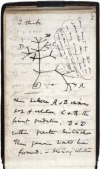
- Evolution by natural selection is the main means by which new features become characteristic of biological populations over successive generations. It was a controversial theory when first proposed, but is now integral to modern biology from ecology to antimicrobial resistance.
-
7.HPV (Human Papilloma Virus)

- Human papilloma viruses are more commonly known as HPV. They can affect the skin and the moist membranes that line parts of the body.
-
8.Dolly the sheep (First mammal to be succesfully cloned from an adult cell)

- Dolly captured the public imagination and she has helped to change our perceptions of biology. Her birth overturned the assumption that the process of differentiation was irreversible.
-
9.Hunterian Museums (Natural History Collections)

- There are two Hunterian Museums in the UK; one in London and one in Glasgow. They are the legacy of John and William Hunter’s private collections.
-
10.IVF (In vitro fertilisation )
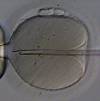
- Healthy baby Louise was born on 25 July 1978 at Oldham General Hospital by planned caesarean section after a full term pregnancy. Similar opening lines can be written for most of us. But Louise's birth was a scientific breakthrough. It changed the lives of many couples who had difficulty conceiving and gave them hope that there is still a chance to hear children's laughter in their home – Louise was the first baby born with the help of in vitro fertilisation (IVF).
-
11.Millennium Seed Bank Partnership (Conserving the world's seeds)

- The Millennium Seed Bank Partnership (MSB) is the world’s largest ex situ plant conservation programme, conserving plants outside their natural environment. The Bank is saving the seeds of thousands of plant species in case they become extinct in their natural habitats.
-
12.Microscope (Exposing worlds unseen to the naked eye)
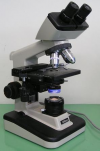
- Although the microscope we would recognise today has been around since the 1500s, the technology itself is thought to date back to around 2,000 BCE when tiny objects were identified by using primitive water microscopes, made of polished crystal lenses and water-filled tubes.
-
13.Chelsea Physic Garden (A centre for botany for more than 300 years)

- The Worshipful Society of Apothecaries set up Chelsea Physic Garden in 1673, as a place for their apprentices to study the medicinal qualities of plants. The Garden became one of the most important centres of botany in the world.
-
14.Worshipful Society of Apothecaries (A Society for almost 400 years)

- The Worshipful Society of Apothecaries, established in 1617, helped to create the foundations for modern medicine and the pharmaceutical industry. It still plays a key role in advancing specialist areas of medicine and research.
-
15.Durrell Institute of Conservation and Ecology (Dedicated to conservation)

- The Durrell Institute of Conservation and Ecology (DICE) is the UK’s largest academic institute dedicated to conservation.
-
16.The Wellcome Trust Sanger Institute (A genomic research centre)

- The Wellcome Trust Sanger Institute is a genomic research centre and was a lead player in the Human Genome Project. Health problems such as cancer, malaria, diabetes, obesity and infectious diseases are partially determined by genetics. The Institute aims to increase understanding of the role of genetics in health and disease and to translate research findings into new treatments for patients.
-
17.Wadham College (Oxford University college, foundation of the Royal Society)
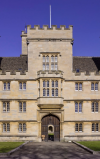
- Wadham College in Oxford has been central to many scientific debates and advances since its formation in 1610. It has a long list of science and humanities graduates, some of whom have become notable biologists, and formed the foundations of the Royal Society.
-
18.Royal Society (Of London for Improving Natural Knowledge)

- The Royal Society is a self-governing academic Fellowship, which comprises the most eminent scientists, technologists and engineers from the UK, Ireland and the Commonwealth. With Queen Elizabeth II as its patron, the Royal Society promotes scientific research and has contributed to many leading scientific discoveries.
-
19.MRI (Magnetic resonance imaging)

- Magnetic resonance imaging or scanning (MRI) is a medical technique for observing inside the body, without using invasive techniques such as surgery, dyes or X-rays. It uses magnetism and radio waves to produce clear images of body tissues that contain water.
-
20.Cavendish Laboratory (At the forefront of experimental physics)

- The Cavendish Laboratory in Cambridge was founded for experimental physics, but it has also been the site of a number of breakthroughs in biology. Among its 29 Nobel laureates are Dorothy Hodgkin, Francis Crick, James Watson, Max Perutz and John Kendrew. They all won the Nobel Prize for their work using physical methods to look at the structures of biomolecules.



